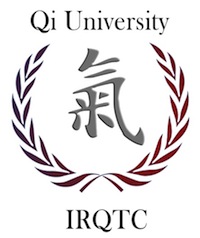PRESS REPUBLICAN, FEBRUARY 11TH, 2014
February 11, 2014
Ancient practices, modern application
By ASHLEIGH LIVINGSTON. Press-Republican
ESSEX — When Brian Trzaskos suffered bilateral shoulder separations about eight years ago, he found himself unable to recover using traditional physical-therapy methods.
“When the stuff I was taught in school wasn’t working, I fell back on my qigong and tai chi practices,” said the physical therapist of 21 years.
Trzaskos, who is also licensed in massage therapy and certified in tai chi, qigong and meditation instruction, made strides in his recovery with the ancient Chinese exercises and decided they would be valuable to his clients, as well.
So six years ago, after having worked at Craig Hospital for spinal cord and brain injuries in Englewood, Colo., as well as Elizabethtown Community Hospital, the SUNY Buffalo graduate opened his own practice.
CLIENTS’ NEEDS
Ascent Wellness, located within NEW Health at 2885 Essex Road in Essex, offers physical, occupational and massage therapy based on clients’ needs, not on their diagnoses.
“We’re very specifically oriented to the clients’ needs,” Trzaskos said.
Because his practice doesn’t deal with insurance companies, he noted, it is able to raise the bar on the quality of care it provides and have a “healing relationship” with clients that addresses their needs without being limited by a third-party payer.
In addition to offering traditional manual therapy, including joint manipulation — soft-tissue-release, muscle-energy, deep-tissue and craniosacral techniques — and neuromuscular therapy, Ascent Wellness designs personalized programs for clients that incorporate tai chi and qigong as therapeutic tools to rehabilitate the body.



 Fundamentals of Rehabilitative Qigong & Tai Chi Level 1 Certification
Fundamentals of Rehabilitative Qigong & Tai Chi Level 1 Certification